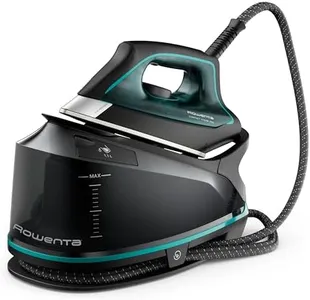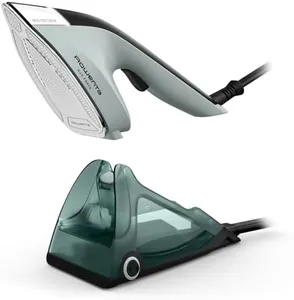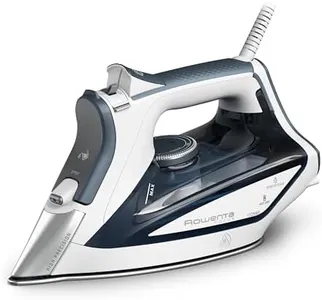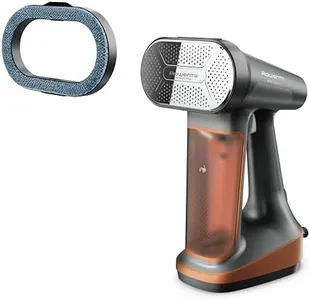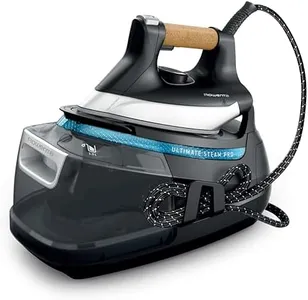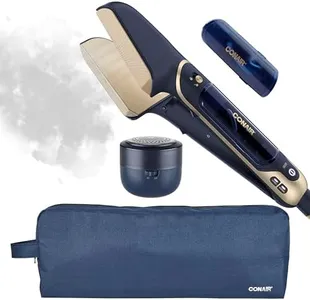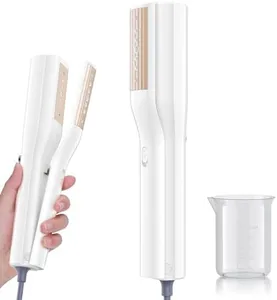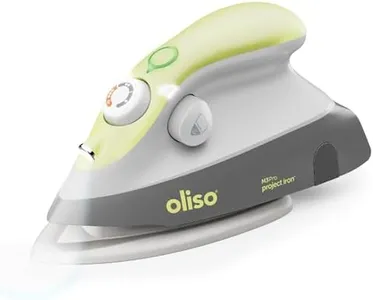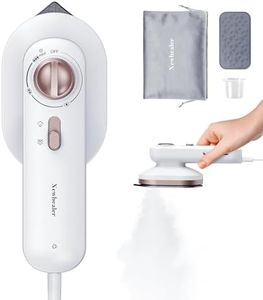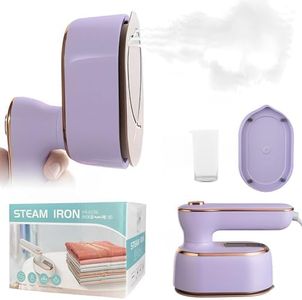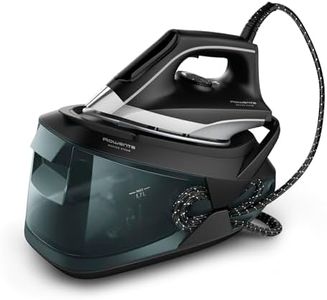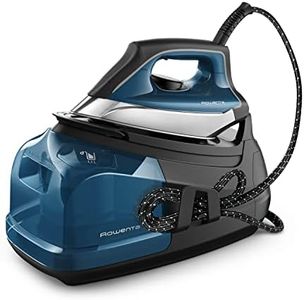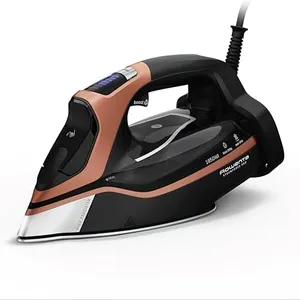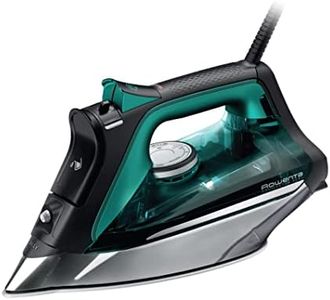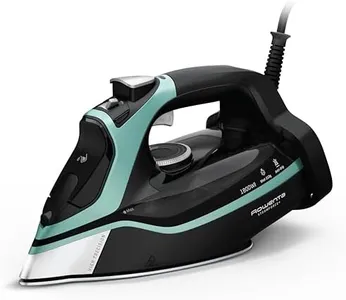10 Best Rowenta Steam Irons 2025 in the United States
Our technology thoroughly searches through the online shopping world, reviewing hundreds of sites. We then process and analyze this information, updating in real-time to bring you the latest top-rated products. This way, you always get the best and most current options available.

Our Top Picks
Winner
Rowenta Iron for Clothes, High Pressure Steamer Iron with Boiler System, 400 Steam Holes, Vertical Steaming, 37oz Tank, Stainless Steel Soleplate, Auto-Off 1800 watts, Black Green, DG7626
Most important from
10212 reviews
The Rowenta DG7626 is a powerful steam iron designed to tackle tough wrinkles with its high-pressure steam output of up to 380 g/min. This makes it highly effective for quick and efficient ironing. The stainless steel soleplate with 400 active steam holes ensures even and precise steam distribution, enhancing ironing performance. With a large 37-ounce (1.1L) water tank, this iron supports extended ironing sessions without frequent refills, making it suitable for large laundry loads.
Additionally, it offers the convenience of both vertical steaming and horizontal ironing, broadening its usability for different garment care needs. The compact design and cord management make storage straightforward, while safety features like auto-off and anti-drip protection add to its user-friendliness.
However, at a weight of 9.37 pounds, it may be considered heavy for some users, potentially causing fatigue during prolonged use. Nevertheless, with a solid customer rating of 4.2 out of 5 stars, it seems to be a reliable and effective choice for those looking for a versatile and robust steam iron.
Most important from
10212 reviews
Rowenta, 2-in-1 Duo Force Iron and Steamer for Clothes, 1700W Steam Iron, Stainless Steel Soleplate, Ultra-lightweight, Detachable 13.5-oz Water Tank, 30s Heat-Up, Anti-Drip, Black & Green, JR4030
Most important from
10258 reviews
The Rowenta 2-in-1 Duo Force Iron and Steamer stands out with its dual functionality, allowing seamless transition between steaming and ironing, ideal for a polished look on various fabric types. Its ultra-lightweight design at only 1.65 lbs makes it easy to handle, and the detachable 13.5-oz water tank provides up to 45 minutes of ironing, which is quite convenient for longer sessions. The fast 30-second heat-up time and powerful 1700-watt output, along with a 180 g/min steam boost, make it efficient for quick touch-ups.
The stainless steel soleplate ensures smooth gliding and durability, while the 7.5-ft cord offers ample reach for maneuverability. Safety features like the auto shut-off and no-setting technology add a layer of peace of mind, making it safe for all ironable fabrics. However, it is worth noting that the item weight is listed as 3.3 pounds, which could be due to packaging, and some users might find this discrepancy confusing. Another minor drawback is the relatively high price, which might not appeal to budget-conscious buyers. Despite these points, its strong performance and versatility make it a solid choice for anyone looking for a reliable ironing and steaming solution.
Most important from
10258 reviews
Rowenta Iron Steamer for Clothes, Focus Stainless Steel Soleplate, 400 Microsteam Holes, Powerful Steam Iron, Lightweight, Leakproof, 1725 Watts
Most important from
10212 reviews
The Rowenta Iron Steamer is designed to make your ironing experience efficient and effective, making it a solid choice for anyone looking to tackle wrinkled clothes. One of its standout features is the powerful steam output, with a burst of up to 135g/min and a continuous steam rate of 35g/min. This enables quick and effective wrinkle removal on various fabrics, from cotton to silk, thanks to adjustable steam settings. The soleplate, made of stainless steel and equipped with 400 microsteam holes, ensures excellent steam distribution for thorough coverage.
In terms of convenience, the Rowenta iron is lightweight at just over 3 pounds, which allows for easy maneuverability during use. The 11.78-inch length and 5.46-inch width design further enhance its usability. Additionally, the auto shut-off feature adds a layer of safety, preventing any accidents if the iron is left unattended, while the anti-drip protection helps keep your clothes stain-free.
This steam iron is well-suited for anyone looking to make their ironing tasks easier and more effective, especially those who regularly handle a variety of fabric types. Its powerful steam capabilities and safety features make it a practical choice in the steam iron category.
Most important from
10212 reviews
Buying Guide for the Best Rowenta Steam Irons
When choosing a steam iron, it's important to consider several key specifications to ensure you get the best fit for your needs. Steam irons can vary greatly in terms of performance, ease of use, and additional features. Understanding these specifications will help you make an informed decision and find an iron that will make your ironing tasks easier and more efficient.FAQ
Most Popular Categories Right Now
